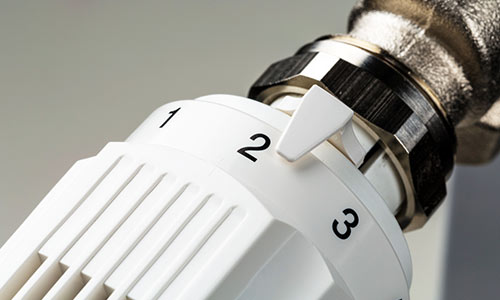Radiators
To service radiators, we perform a power flush, to make the heating system more efficient. By performing a power-flush, the sludge and dirt that has built up in some areas will be removed.
We also provide the service of removal and installation of new radiators.
New radiators can:
- Improve home aesthetics and create more space
- Improve heat efficiency and save money
- Prevent future leaks
Examples of styles:
- Column – A classic look, stylish
- Panel – Large surface area
- Heated towel rails – Will keep towels in the bathroom warm, as well as heat up the entire room itself.


Thermostatic Radiator Valves
save money by using the energy you need by installing thermostatic radiator valves. We can replace normal radiator valves with thermostatic valves, so that you can fine-tune the temperature for every room.
Thermostatic radiator valves can:
– Improve heat efficiency and save money
– Control the temperature in each room, preferable to different needs
Underfloor Heating
Underfloor heating can be either a ‘wet’ system that pumps warm water through pipes under the floor, or ‘dry’ system of electric coils placed under the floor. Underfloor heating uses the basic principle of heat rising to heat up floor surfaces such as tile.
Electric underfloor heating
Electric underfloor heating uses a network of wires under floor surfaces that heat up. Depending on the shape of rooms, heating mats are easy to install, as they cover large areas and the individual wire reach crevices that are hard to get to. Electric wires are relatively thin and so make them easier and inexpensive to install when compared to a water based system. Electric heating systems should be installed above a layer of insulation, so that they heat the surface, and not the material beneath them.
Water underfloor heating
Water-based systems are a network of wires linked to the boiler that pump hot water around rooms.
Underfloor heating systems distribute heat evenly, so they need a lower heat than radiators, making the boiler more efficient.
Installing a water-based system is not easy and, unlike electric systems, shouldn’t be installed without assistance.
The pros and cons of underfloor heating
Pros
- Heated floor takes off the chill of tiled floors in rooms with tiles
- Heating Is hidden away from view, meaning that radiators are not needed
- Underfloor heating heats a large area, rather than an immediate area like a radiator would.
- To be able to heat a room effectively, radiators must be at a higher temperature whereas underfloor heating works across a larger area, offering an even spread of heat
- Underfloor heating works well with stones and tiles, making it popular in bathrooms and kitchens
- Electric underfloor heating can cost about £75 per square-meter of fitted mats, meaning that it is affordable for renovations
Cons
- Wet systems are more costly in installation, making them suitable for newly built houses
- Wet systems also require more room than electric systems, as pipes are thicker than wires
- Due to the lower temperatures, underfloor heating takes longer to heat a room, due to this, it is essential to combine it with a timer
- Dependent on the type of surface material, underfloor heating cannot be placed under certain surfaces such as wood floors
If you are not sure about ‘DIY’ or have queries with underfloor heating, don’t hesitate to ask us for help.
When installing electric underfloor heating, you will need a qualified electrician to connect the system to the electricity supply. Water-based systems shouldn’t be installed without technical help whatsoever.

